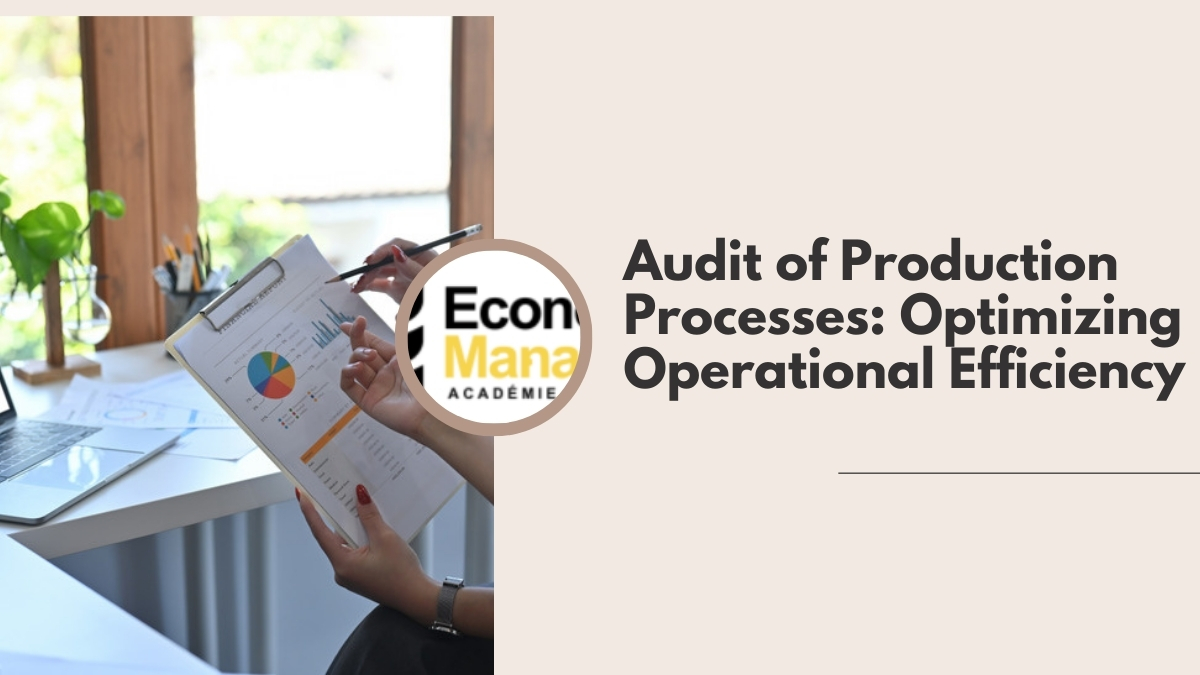In an era of escalating corporate fraud and escalating economic losses, the role of audit in fraud prevention has never been more critical. Fraud poses a significant threat to organizations of all sizes and industries, compromising not only their financial health but also their reputation and trust. The audit function serves as a powerful tool to combat fraud, protect organizations, and foster a culture of integrity and accountability.
Table de matières
Understanding the Impact of Fraud
Fraud can have far-reaching consequences for any business. It erodes the very foundation of trust and integrity that organizations are built upon. The impact of fraud goes beyond financial losses, although these can be significant. Fraud can lead to a loss of competitive advantage, damage to brand reputation, decreased employee morale, and even legal consequences. It undermines the confidence of investors, customers, and stakeholders, making it crucial to address this issue proactively.
Moreover, fraud is an insidious crime that often goes undetected for extended periods. This allows it to fester and cause even more extensive damage. The Association of Certified Fraud Examiners’ (ACFE) 2022 Global Study on Occupational Fraud and Abuse reveals that the typical organization loses 5% of its annual revenue to fraud. This highlights the urgent need for effective fraud prevention measures, with audit playing a central role.
The Role of Audit in Fraud Prevention
Audit serves as an essential guardian of an organization’s financial integrity and stability. It plays a proactive role in fraud prevention by assessing internal controls, identifying vulnerabilities, and recommending improvements. Here’s how the audit function helps to fortify an organization’s defenses against fraud:
1. Assessing Internal Controls
Internal controls are the policies and procedures that govern an organization’s operations, helping to ensure accuracy in financial reporting and compliance with laws and regulations. A strong system of internal controls is a critical first line of defense against fraud. Auditors review these controls to identify weaknesses that could create opportunities for fraudulent activities. This includes evaluating the control environment, which encompasses factors like management’s tone at the top, ethical values, and oversight responsibilities.
For instance, an auditor might examine the segregation of duties within an organization’s accounting department. Ensuring that no single individual has control over all aspects of a financial transaction reduces the risk of fraud going undetected. By assessing these internal controls, auditors can provide recommendations to strengthen them, thereby lowering the likelihood of fraud occurring.
2. Identifying Red Flags and Anomalies
Auditors are trained to identify red flags and anomalies that could indicate fraudulent activities. They scrutinize financial statements, transactional data, and operational processes for signs of manipulation, embezzlement, or other fraudulent schemes. This includes analyzing financial ratios, comparing financial data with industry benchmarks, and reviewing unexpected changes in financial performance.
For example, a sudden increase in revenue could be a positive sign, but it might also indicate potential fraudulent inflation of sales figures. Auditors investigate such anomalies, asking critical questions and digging deeper to uncover any underlying fraud. They serve as the organization’s « detectives, » using their analytical skills to identify potential issues before they escalate.
3. Promoting Transparency and Accountability
A robust audit function enhances transparency and accountability within an organization. It provides assurance to stakeholders that financial statements accurately reflect the organization’s performance and that internal controls are effectively managed. This transparency builds trust and confidence, attracting investors and business partners who value good governance and integrity.
Additionally, audits can help identify areas where accountability measures need to be strengthened. This might include recommending improvements to management’s oversight responsibilities or suggesting the implementation of additional checks and balances within specific processes. By promoting transparency and accountability, audits deter potential fraudsters and reinforce a culture of integrity.
4. Strengthening Risk Management
Effective risk management is integral to fraud prevention. Auditors collaborate with management to identify, assess, and mitigate risks, including those related to fraud. This involves evaluating the likelihood and potential impact of various risks, as well as reviewing the effectiveness of existing risk management strategies.
For instance, an auditor might assess the risk of fraud within an organization’s procurement process. They would examine controls related to vendor selection, purchasing approvals, and payment processes to identify vulnerabilities. Based on this assessment, the auditor could recommend enhancements to the risk management framework, such as implementing additional approval layers or enhancing monitoring activities.
5. Providing Recommendations and Best Practices
Beyond identifying weaknesses and red flags, auditors offer constructive recommendations to enhance internal controls and fraud prevention measures. They stay abreast of industry best practices and emerging trends in fraud schemes, enabling them to provide valuable guidance to organizations. These recommendations might include process improvements, technological advancements, or changes to organizational structures that bolster fraud resistance.
For example, an auditor could recommend the implementation of a fraud risk management framework, such as the one outlined by the Committee of Sponsoring Organizations of the Treadway Commission (COSO). This framework provides a comprehensive approach to managing fraud risk, encompassing aspects like governance, risk assessment, control activities, information and communication, and monitoring activities.
Leveraging Data Analytics and Technology
In today’s digital age, auditors increasingly leverage data analytics and technology to enhance fraud detection and prevention. Advanced audit software and data analysis tools enable auditors to identify patterns, trends, and anomalies that may indicate fraud. These technologies automate the analysis of large datasets, allowing auditors to focus on interpreting results and taking appropriate action.
For instance, data analytics can be used to identify suspicious transactions, such as unusual payment patterns or discrepancies in expense reporting. Auditors can then investigate these red flags further. Additionally, continuous auditing, enabled by real-time data analysis, allows for more prompt detection of potential fraud, reducing the time window during which fraudulent activities can occur undetected.
Moreover, technologies like artificial intelligence (AI) and machine learning are being harnessed to identify potential fraud risks. These technologies can adapt to changing patterns and behaviors, enabling auditors to stay ahead of evolving fraud schemes. The integration of data analytics and technology into the audit process enhances its effectiveness and efficiency, improving fraud detection capabilities.
The Human Element in Fraud Prevention
While data analytics and technology play a crucial role in fraud prevention, the human element remains indispensable. Auditors bring critical thinking, judgment, and expertise to the table. They interpret the results generated by data analytics tools and provide context and insights that machines may struggle to offer. The combination of human intuition and technological capabilities creates a robust fraud prevention ecosystem.
Additionally, the presence of an active and engaged audit committee enhances fraud prevention efforts. This committee, typically comprising members of an organization’s board of directors, provides oversight and guidance to the audit function. They ensure that auditors have the necessary resources and support to carry out their duties effectively. The audit committee also serves as a liaison between the audit function and the board, fostering collaboration and alignment.
Moreover, a strong ethical culture within an organization is vital. Employees who understand the importance of integrity and are encouraged to speak up when they witness potential fraud are powerful allies in fraud prevention. Establishing a whistleblower program or hotline encourages employees to report suspicious activities without fear of retaliation. This human element, coupled with a culture of ethics and accountability, strengthens the overall fraud prevention framework.
Best Practices for Effective Fraud Prevention
To maximize the impact of audit in fraud prevention, organizations should adopt a holistic approach that addresses people, processes, and technology. Here are some best practices to consider:
- Tone at the Top: Foster a strong tone at the top, with management and the board of directors setting the right example and prioritizing ethical behavior.
- Ethical Culture: Promote a culture of integrity and accountability throughout the organization, encouraging employees to act as guardians of ethical behavior.
- Internal Controls: Implement and regularly review a robust system of internal controls, addressing key risk areas and ensuring proper segregation of duties.
- Risk Assessment: Conduct comprehensive fraud risk assessments to identify vulnerabilities and allocate resources effectively to mitigate those risks.
- Data Analytics: Embrace data analytics and technology to enhance fraud detection capabilities and enable continuous auditing.
- Training and Education: Provide regular training and education to employees on fraud awareness, prevention, and reporting, empowering them to be vigilant.
- Whistleblower Protection: Establish and widely communicate a whistleblower program that protects employees who report potential fraud or misconduct.
- Collaboration: Foster collaboration between the audit function, management, and the board, ensuring open lines of communication and a shared commitment to fraud prevention.
- External Audit Coordination: Coordinate with external auditors to leverage their expertise and ensure a comprehensive approach to fraud prevention.
Case Study: Illustrating the Power of Audit in Fraud Prevention
Consider the case of a mid-sized manufacturing company that experienced significant growth over a short period. As revenue increased, so did the complexity of its operations and financial transactions. The company’s management recognized the heightened risk of fraud and engaged an external audit firm to assess its internal controls and fraud prevention measures.
The auditors identified several weaknesses in the company’s internal controls, including inadequate segregation of duties and a lack of proper approval processes for certain transactions. Additionally, the company’s rapid growth had outpaced its existing accounting software’s capabilities, creating data integrity issues and potential opportunities for fraud. The auditors also noted that the company’s fraud risk assessment process was insufficient, failing to address key risk areas.
Based on these findings, the auditors provided comprehensive recommendations. They suggested improvements to the company’s internal controls, including reorganizing duties among the accounting staff and implementing a more robust approval process for purchases and payments. The auditors also recommended upgrading the accounting software to a more sophisticated system that could handle the company’s increased transaction volume and provided better security controls.
Moreover, the auditors guided the company in enhancing its fraud risk assessment process. They identified previously overlooked risk areas, such as vendor management and inventory control, and recommended specific controls to mitigate these risks. The auditors also emphasized the importance of regular monitoring and suggested implementing a continuous auditing approach to detect potential fraud more promptly.
By adopting these recommendations, the manufacturing company significantly strengthened its fraud prevention measures. The improved internal controls reduced opportunities for fraud, while the upgraded accounting software enhanced data security and integrity. The company’s management also gained a deeper understanding of fraud risks and how to address them effectively. As a result, the organization fostered a culture of transparency and accountability, bolstering its reputation and stability.
Conclusion: Empowering Organizations Through Audit
The role of audit in fraud prevention is both critical and multifaceted. Auditors serve as sentinels, safeguarding organizations from the damaging effects of fraud. Through their assessment of internal controls, identification of red flags, promotion of transparency, and provision of recommendations, auditors play a pivotal role in fortifying an organization’s defenses. By leveraging data analytics and technology, coupled with the indispensable human element, auditors enhance fraud detection capabilities.
Effective fraud prevention requires a holistic approach that addresses people, processes, and technology. Organizations that prioritize ethical behavior, establish robust internal controls, and embrace data-driven decision-making create a formidable barrier against fraud. Audit empowers businesses to protect their financial health, reputation, and stability, fostering a culture of integrity and accountability. Ultimately, the audit function serves as a cornerstone of good governance, enabling organizations to thrive with confidence and resilience.







